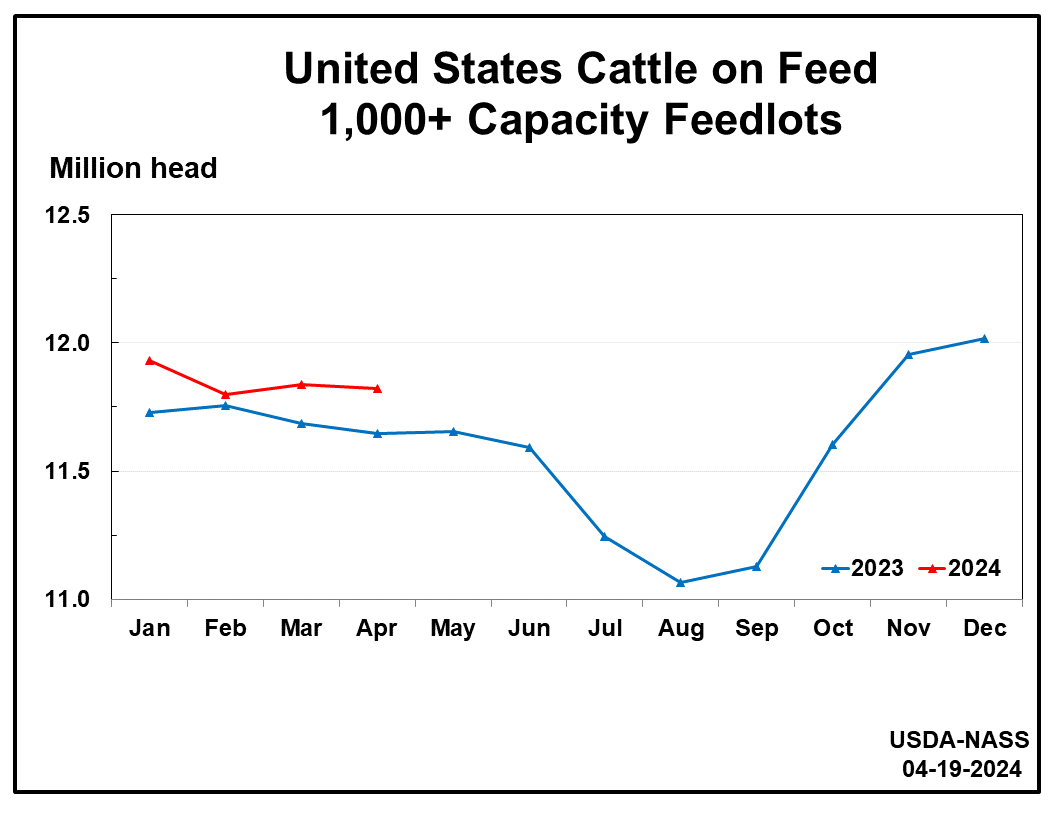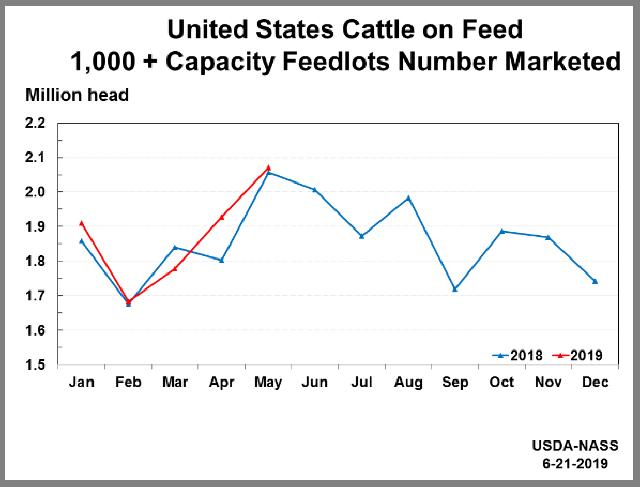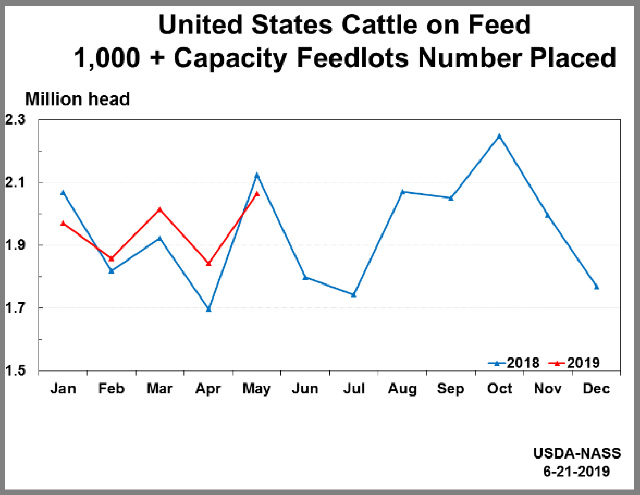- Data & Statistics
Access Quick Stats (searchable database)
The Quick Stats Database is the most comprehensive tool for accessing agricultural data published by NASS. It allows you to customize your query by commodity, location, or time period.
Access Quick Stats Lite
Quick Stats Lite provides a more structured approach to get commonly requested statistics from our online database.
Explore Statistics
County Level Information
Geospatial Data & Interactive Maps
- Publications
Browse NASS Reports
- by Subject
- by Date (Reports Calendar)
- by Title/Release Day
- by Keyword
- Guide to Products and Services
Additional Reports
Historical Publications
- Archived Ag Census Reports (2002 and prior - published every 5 years)
- Annual Agricultural Statistics
- Statistical Bulletins (final estimates, 1987 to 2012
- Track Records: (crops, livestock, grain stocks)
- Trends 20th century
- Price Reactions (after crop or livestock reports)
Receive Reports by Email:
- Newsroom
News Releases
12/23/25 United States hog inventory up 1%
12/15/25 USDA Launches Final Phase of 2025 Agricultural Resource Management Survey
12/10/25 USDA to Conduct 2025 Organic Survey
09/30/25 US corn ending stocks down 13% from last year, soybean ending stocks down 8%
09/29/25 USDA to Host Data Users’ Meeting to Gather Public Input on Statistical Programs
Read More News
ASB Notices
12/22/25 USDA NASS reschedules reports due to December 24 & 26 government closure
11/19/25 USDA Reschedules Reports Affected by Lapse in Federal Funding
10/31/25 USDA’s National Agricultural Statistics Service (NASS) will release key data in November
08/28/25 NASS discontinues select data collection programs and reports
03/19/25 NASS reinstates select data collection programs and reports
Read More Notices
Videos
02/13/24 2022 Census of Agriculture Data Highlights
02/13/24 How to Find 2022 Census of Agriculture Data
02/13/24 2022 Census of Agriculture Data Release Event
07/16/21 What is a Farm?
08/05/20 The NASS Mission: We do it for you
View More Videos
ASB Briefings
12/23/25 Hogs and Pigs (Decemer 2025)
12/09/25 Crop Production (December 2025)
11/14/25 Crop Production (November 2025)
09/30/25 Small Grains Summary and Grain Stocks (September 2025)
09/25/25 Hogs and Pigs (September 2025)
View More Briefings
- Surveys
- Census
- About NASS
Structure and Organization
- Agency Overview
- NASS Biographies
- Organizational Chart
- Assistance to Other Organizations
- International Programs
- Talking About NASS - A guide for partners and stakeholders
- NASS Strategic Plan for FY 2022-2026
- USDA Strategic Goals
Guiding Principles
- Mission and Core Values
- Keeping Data Safe
- Confidentiality Pledge
- Security Pledge
- Security Statement
- Statement of Commitment to Scientific Integrity
- Regulations Guiding NASS
- Information Quality
- Learning Agenda, Fiscal Year 2024 -2026
Civil Rights
Work at NASS
Education and Outreach
- Understanding Ag Statistics
- Data Users' Meetings
- Morris Hansen Lecture
- International Conference on Agricultural Statistics
History and Procedures
- Agricultural Statistics Board and Lockup
- Agricultural Statistics: A Historical Timeline
- The Story of U.S. Agricultural Estimates
- As We Recall: The Growth of Agricultural Estimates, 1933-1961
-
Safeguarding America's Agricultural Statistics Report and Video
- History of Ag Statistics
- Report Procedures
- An Evolving Statistical Service
- Fact Finders for Agriculture
- Hall of Fame
- Contact Us
Mailing Address:
USDA-NASS
1400 Independence Ave., SW
Washington, DC 20250Survey FAQs and Contact Us:
Access FAQs or submit a question.
Data Inquiries:
Hours: 8:00 a.m. - 5:00 p.m. Central Standard Time
Monday - Friday, except federal holidays
Toll-Free: (800) 727-9540Media Inquiries:
Other USDA Inquiries:
Hours: Monday to Friday 8 a.m. - 5 p.m. EST
Toll-Free: (833) One-USDA
Email: askusda@usda.gov
Website: https://ask.usda.gov/s/Translation Services:
Regional and State Field Offices:
Find contact information for Regional and State Field Offices
Ask a Specialist:
Have a specific question for one of our subject experts? Contact a specialist.
Web Content Publishing Schedule:
Section 207(f)(2) of the E-Government Act of 2002 requires federal agencies to develop an inventory of information to be published on their Web sites, establish a schedule for publishing information, make those schedules available for public comment, and post the schedules and priorities on the Web site.
- Help
Technical Issues
Surveys
Cattle on Feed

The Cattle on Feed survey provides estimates of the number of cattle being fed a ration of grain, silage, hay and/or protein supplements for the slaughter market that are expected to produce a carcass that will grade select or better.
This survey is conducted in the 16 largest cattle-feeding states. About 2,000 known cattle feeders with a capacity of 1,000 or more head are enumerated. Feedlots with 1,000 or more head capacity represent about 85 percent of all fed cattle in the U.S. The 16 largest states represent 98 percent of U.S. cattle on feed in lots of 1,000 head or more capacity. Data are used in conjunction with Cattle Inventory data from January and July to obtain a measure of cattle on feed not included in the survey.
Respond Online
Click here to complete your survey online. Remember, you will need your unique survey code to sign in.
Get the data from the results of this survey.
Publications:
The monthly Cattle on Feed report is normally released on the third Friday of each month with inventory data pertaining to the first of that month.
Access the data in Quick Stats database:
View and download data from the NASS Quick Stats database.
- Choose the detailed database (Quick Stats 2.0).
- In Quick Stats 2.0, under Program, select "Survey."
- Make additional category choices for the data you are looking for.
- Click to read about the Quick Stats Tools
Want to view all reports? Click an option below to visit ESMIS/NAL or to subscribe to our RSS feeds.
Charts and Maps:
Methodology and Quality Measures
March 21, 2025
March 11, 2024
March 10, 2023
March 11, 2022
March 26, 2021
Feb. 21, 2020
March 29, 2019
March 9, 2018
Feb. 22, 2013
Program Content
Cattle feeders provide data on inventory, placement into feedlots, marketing's from feedlots, and other disappearance from feedlots (deaths, returned to grazing, movement to another feedlot). They provide further information on placement by weight group, and inventory by class. Supplemental b n data about the number of lots by size group including lots with less than 1,000 head capacity are published annually in February.
Uses
The cattle on feed estimates provide an important near-term outlook for beef supplies coming to market. Current marketing's are heavily correlated with Livestock Slaughter. Cattle on feed placements by size group provide producers and analysts' information to forecast marketing's in a time period from approximately three to eight months following each monthly report.
Cumulative placements can be used with January and July Cattle reports to monitor feeder cattle supplies. Inventory by class can be used with January and July Cattle reports to monitor heifer retention in the cow/calf breeding herd.
Benefactors of these data series= range throughout the beef marketing channel. These would include cow/calf producers, backgrounding operations, cattle feeders, meat packers, wholesalers, and retailers. Cattle on feed inventories correlate with the utilization of feed grains, impacting these and other input suppliers.
Frequency
The Cattle on Feed survey is conducted monthly. Inventory by class, which breaks inventory into steers, heifers, and cows and bulls is asked on a quarterly basis. Estimates are published for the 12 largest states and the U.S.
Methods
The reference date for the surveys is the first day of each month. Data collection occurs for 7 to 10 days beginning at the reference date. Due to the repeated contact of the respondents, convenience of reporting by respondents is critical to the success of the program. A considerable amount of time and effort is expended to tailor the data collection to the operation as well as coordinate the data collection with other surveys underway. Mail out/mail back data collection is used and emphasized as a cost effective and less burdensome method of data collection. Relative to other surveys, a substantial number of personal interviews are conducted for operators who prefer and request this method. There are many extremely large cattle feeders who play a key role in many states= cattle industries, and every effort is put forth to build a partnership with them as reporters. However, the primary method of collecting data is phone enumeration.
Phone enumerators utilize Computer Assisted Telephone Interviewing (CATI), a sophisticated software which allows them to verbally maintain a conversation with the respondent while following the instrument flow and question text. Reported data are entered directly into an electronic format and the software performs simple consistency checks as well as checks against previously reported data which drastically reduce the need to make follow up contacts to the respondent.
Special Features
In February, estimates of the total number of operations feeding cattle and the number of operations by herd size are also made. The total inventory for each range of herd size is included.
Related Programs
Cattle Inventory
Meat Animals: Production, Disposition, and Income
Livestock Slaughter
Last Modified: 11/19/2025




